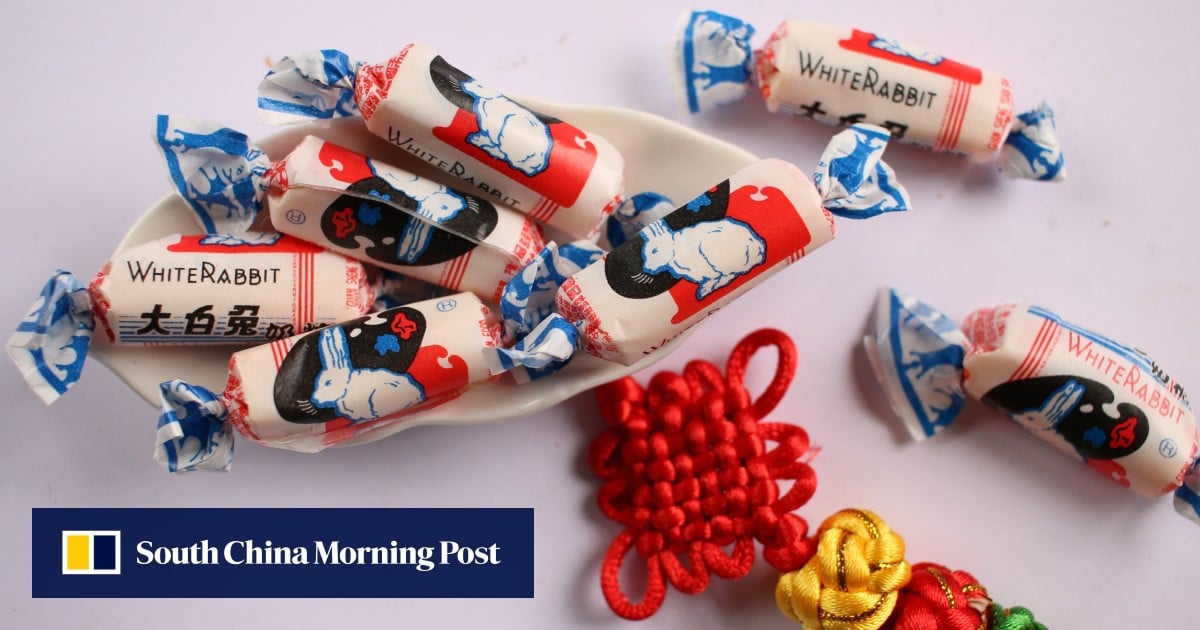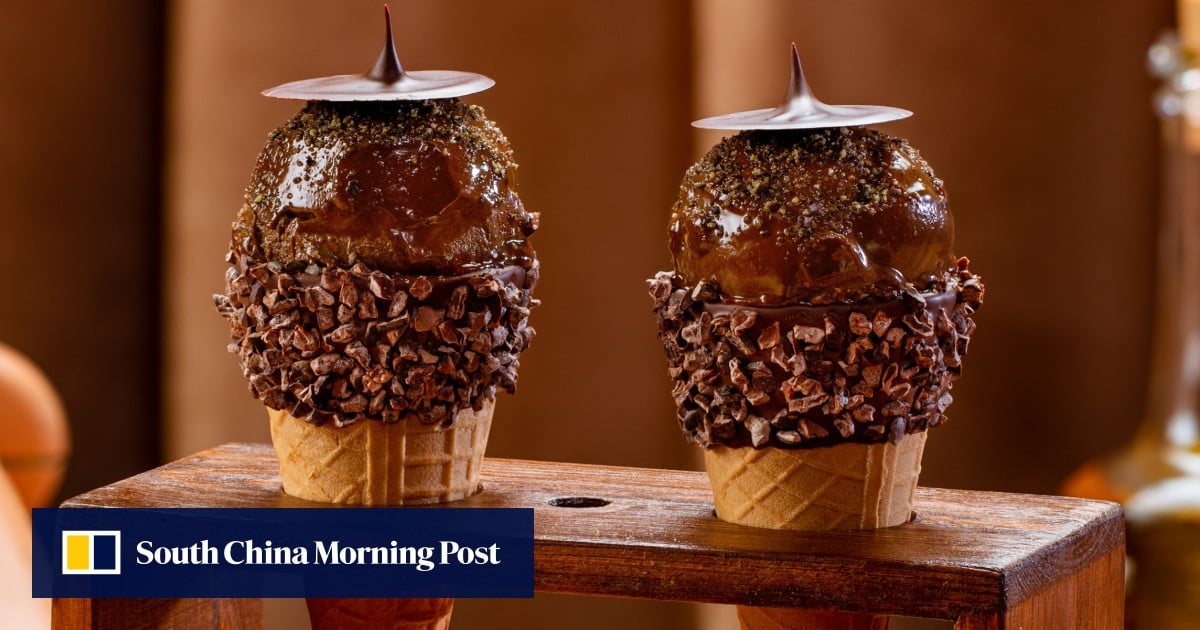These tins now have a place in the collective memory of many households, and not just in Asia. The hardy containers, when emptied of their sugary bounty, make the perfect storage vessels for sundries and knick-knacks.
A common joke plays on the tragedy of opening a tin and not finding it filled with actual biscuits, but instead a whole sewing kit.
In 2013, a subreddit post simply titled, “the ONE time i needed a thread & needle”, with a photo of a full tin of cookies, generated more than 500 comments.
The famed Kjeldsens butter cookies date back to 1933, when husband-and-wife duo Marinus and Anna Kjeldsen opened their first commercial bakery in Jutland, Denmark.
Now operating under the Kelsen Group – which also produces Royal Dansk butter cookies – it is reported that more than 25,000 tonnes of cookies are churned out every year.
Lunar New Year lucky foods: everything you need to know
Lunar New Year lucky foods: everything you need to know
“Kjeldsens […] products are bought as presents, in particular over the Chinese New Year when 86 per cent of Hong Kong consumers either purchase or consume Kjeldsens butter cookies,” claims a report by marketing publication Superbrands.
In 1982, Kjeldsens set up its own subsidiary company in Hong Kong, marking the territory as one of its most important markets.
2 Sugus

Origin: Neuchâtel, Switzerland
Sui see tong (literally “Swiss candy” in Cantonese) is the name of these iconic chewy candies, already indicating their place of origin.
Don’t blindly call it ‘Lunar New Year’ if the context is clearly Chinese
Don’t blindly call it ‘Lunar New Year’ if the context is clearly Chinese
Similar to other mainstream sweets such as Starbursts or Opal Fruits (depending on whether you grew up in the United States or Britain), Sugus are recognisable for their brightly coloured wax wrappers and originally came in just four flavours: pineapple, raspberry, lemon and orange.
Today, the line-up features grape, green apple, raspberry and strawberry.
Sugus first burst onto the scene in 1931, and are the creation of Suchard, a chocolate factory in Neuchâtel. In 1993, production of the sweets moved to France and, in 2005, it was sold to the Wrigley Company – ie, it’s now in the same stable as Starbursts.
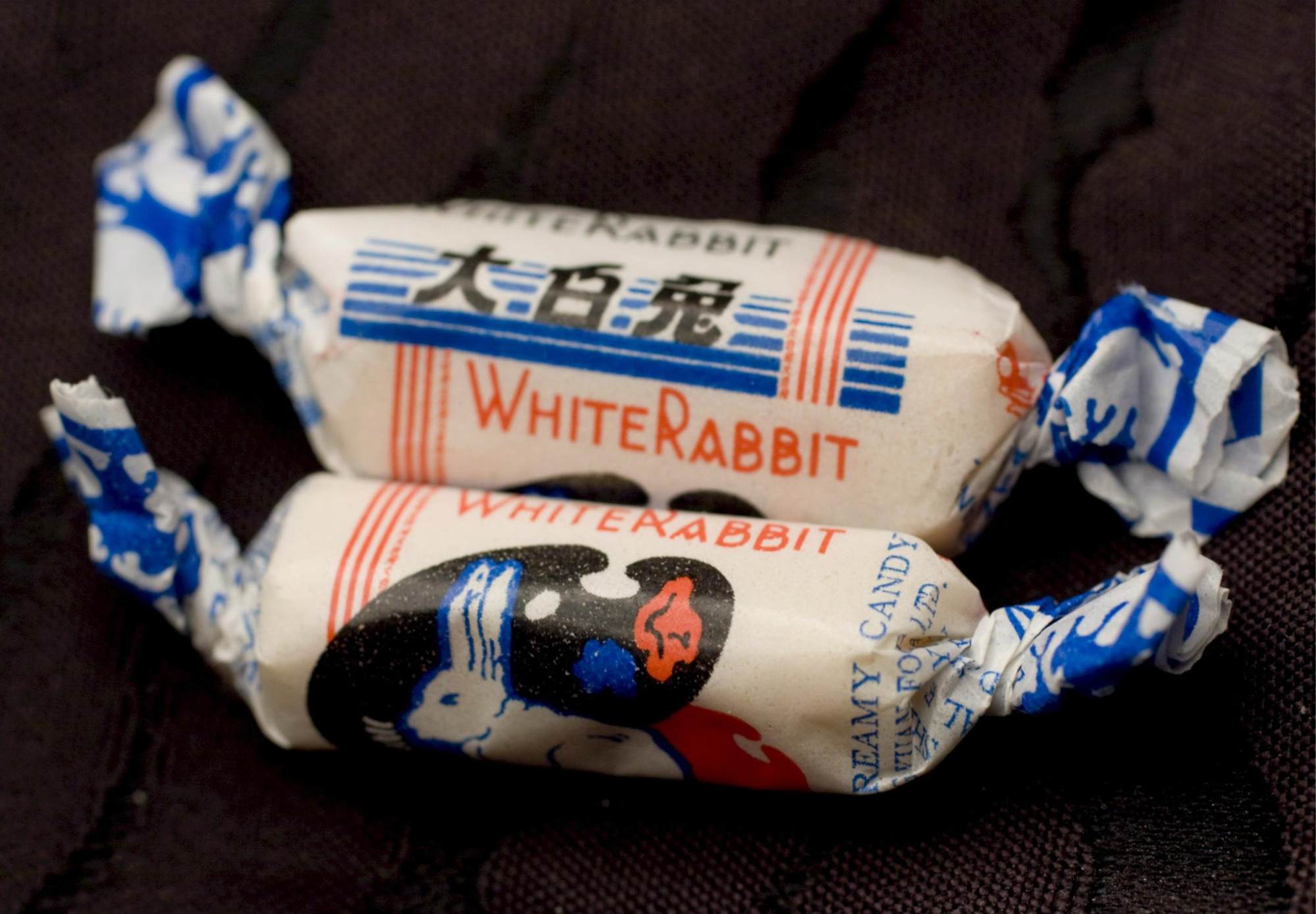
3 White Rabbit Creamy Candy
Origin: Shanghai, China
What to wear for Chinese New Year? The clue is in one of those 3 words
What to wear for Chinese New Year? The clue is in one of those 3 words
It is said the sweets were originally inspired by British-style creamy candy, and were first called Mickey Mouse Sweets – yes, the first examples of this ubiquitous candy featured not an adorable white bunny but a famous cartoon rodent.
In 1976, ABC (then known as Ai-Ming) was folded into the state-run Guan Sheng Yuan Food Company.

The factory produces more than 24,000 tonnes of sweets every year and across mainland China, White Rabbit Creamy Candy accounts for about 5 per cent of all sweets sold by the company.
In modern times, the company – like many others – has experimented with producing new flavours including durian, red bean and even wasabi. For many, however, the classic powdery milky original will forever be the gold standard.
4 Ferrero Rocher
Origin: Alba, Italy
Yes, it is a delightful fact that one of the world’s most famous chocolate truffles comes from a region of Italy that is synonymous with fragrant white truffles.
While the Ferrero company was established soon after World War II ended, the Ferrero Rocher is a relatively new product, having been created only in 1982 – almost two decades after the release of the company’s first product, Nutella, in 1964.
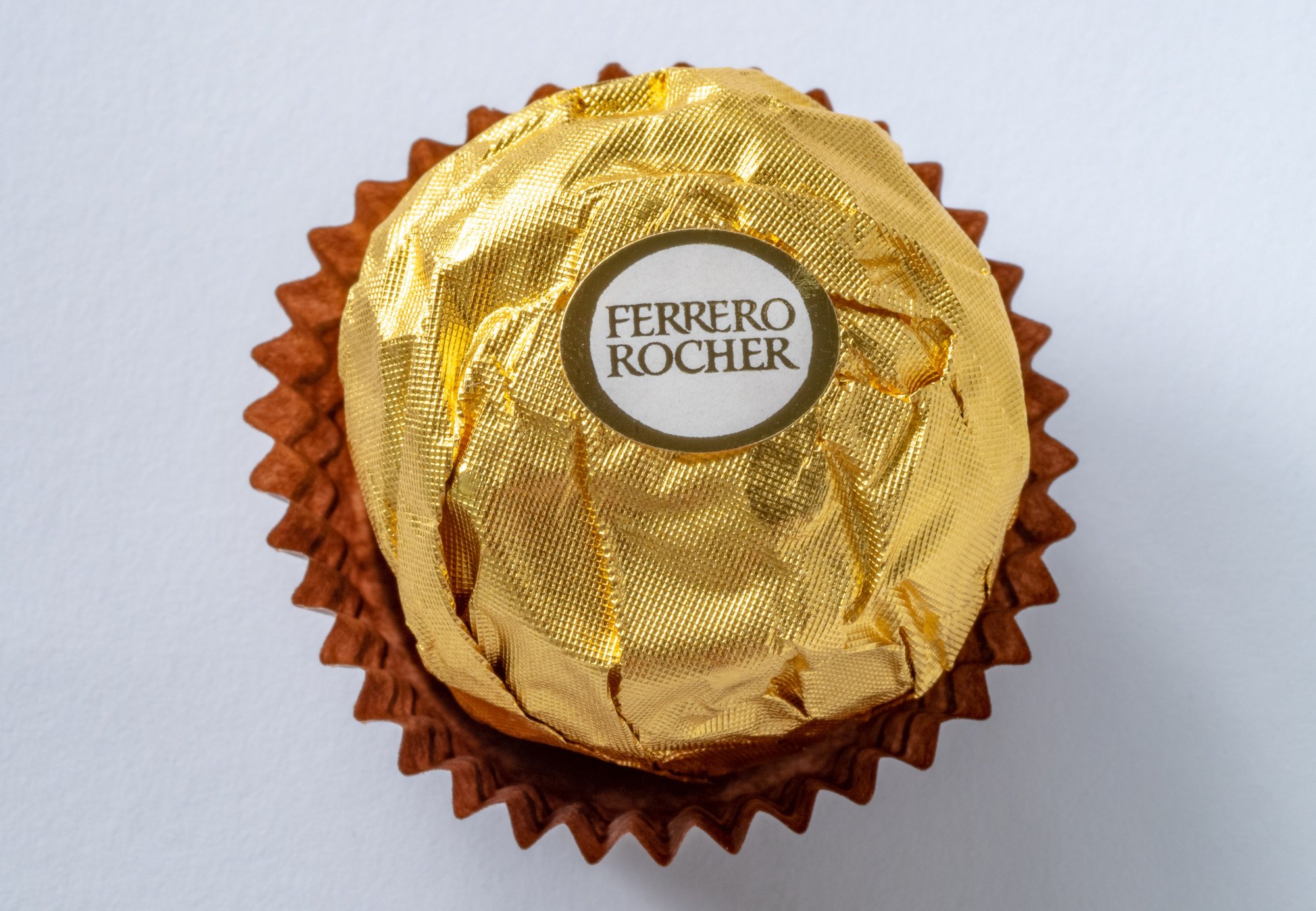
Perhaps surprisingly, Ferrero Rocher was launched in Hong Kong almost immediately after its inception, breaking into the Asia market in 1984 – it was more than a decade later that the treat would be launched in mainland China.
With its attractive packaging and auspicious gold wrapper, the chocolate became a true status symbol and was frequently hand-carried across the border into the mainland to serve as gifts.
Known in Hong Kong as “golden sand”, the chocolate was for a long time a marker of sophistication thanks to its sleek packaging and multilayered ingredients – a whole hazelnut wrapped in a velvety chocolate ganache, crisp wafer biscuit, and hazelnut-studded chocolate coating.
Is Rihanna proof that Year of the Dragon babies are luckier than others?
Is Rihanna proof that Year of the Dragon babies are luckier than others?
Ask any Ferrero Rocher fan and they will have their own take on how to best tackle eating the sweet – layer by layer, or with a full-on, cross-section-revealing bite.
In 2021, the company launched Ferrero Rocher Origins, which features single-origin chocolate from Ghana, Ecuador and Ivory Coast and was designed with Gen Z and millennial consumers in mind.
5 Garden’s lucky candies

Origin: Hong Kong
Hong Kong’s famed home-grown bakery brand also produces one of the most recognisable Chinese New Year sweets, known as lai see “lucky candies”.
The shiny red and gold packaging makes it a no-brainer for the festive season, and fans love it for its fragrant, sweet strawberry flavour and combination of hard candy exterior and chewy interior.
6 Yan Chim Kee’s coconut candies
Origin: Hong Kong
This brand is more than a century old, having been established in Hong Kong in 1915 by Yan Lun-lap, who started the confectionery company by producing sweets using fresh coconuts imported from Malaysia, on Caine Road in the Mid-Levels.

The family struggled with logistics, and made the “painful” decision to close the factory down in 2006.
However, five years later the brand was revived to the delight of customers, who can now purchase their favourite signature chewy coconut candies and other products, which are now readily available in supermarkets.
7 Smith’s jelly candies
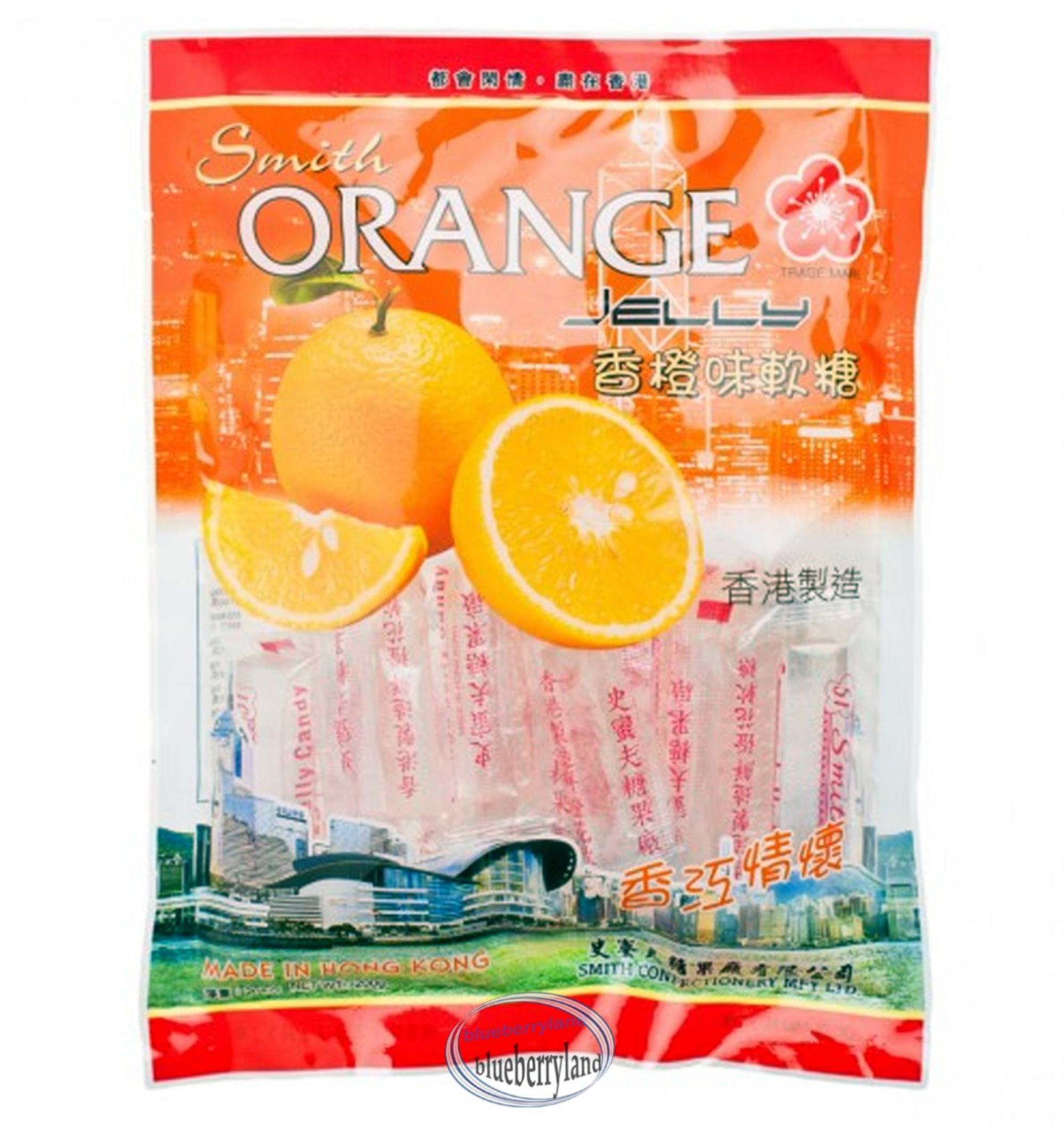
Origin: Hong Kong
A truly retro sweet, Smith’s sticks of translucent melon and orange flavoured jelly candies – as well as their nougat – were once everywhere; but sadly, the Fong family decided to retire and close down the confectionery company in 2019.
It was the end of a long chapter that saw Smith’s rise and fall over the decades, from its inception in 1961 to its heyday in the 60s and 70s, through to the early noughties.
In their sunset era, despite most local candy manufacturers shifting production to the mainland, Smith’s were steadfast about staying – and making most of their sweets by hand.
Unfortunately, the combination of rising costs and competition meant that the Fong brothers decided ultimately to retire in 2019.

